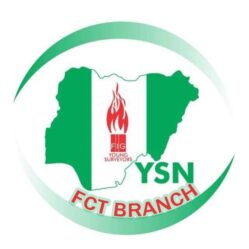Surveying accuracy is greatly impacted by environmental conditions, particularly on difficult construction sites. These elements may impact data gathering, increase errors, and decrease precision. The following are some environmental factors:
Weather Conditions
Temperature Variation: Excessive heat or cold can lead to inaccuracies in the calibration of instruments, materials expanding or contracting, and atmospheric refraction influencing optical measurement.
️ Wind: Unreliable or erratic data might result from strong winds interfering with drones, GNSS receivers, and total stations.
️ Rain and Humidity: These factors can cause instability in benchmarks by interfering with electronic devices, lowering visibility for optical instruments, and altering ground conditions.
️ Fog: Accurate alignments can be challenging when visibility is poor, as it can impact laser-based and optical measurements.
Topographical Challenges
️ Steep Slopes and Uneven Terrain: Difficulty setting up instruments on unstable ground can cause tilting errors and measurement distortions.
️ Obstructions (Buildings, Trees, Rocks): Can obstruct GNSS signals and cause multipath errors, in which signals reflect off surfaces before reaching the receiver.
️ Subsurface Conditions: Soft or moving soil might result in unstable benchmarks, compromising long-term monitoring and accuracy.
Electromagnetic Interference (EMI)
️ High Voltage Power Lines: Can interfere with electromagnetic-based surveying equipment such as total stations and GNSS.
️ Metal Structures and Machinery: Reflect and distort signals, causing errors in electromagnetic distance measurement (EDM) and GNSS positioning.
Human and Operational Factors
️ Vibrations from Heavy Machinery: Can affect tripod stability and introduce errors in sensitive instruments.
Site Accessibility: Difficult-to-reach areas may require alternative surveying methods, which could compromise accuracy.
Mitigation Strategies
️ Use Advanced Instruments: Robotic total stations, differential GNSS, and LiDAR can improve accuracy in harsh conditions.
️ Weather Adaptation: Conduct surveys in stable weather with protective equipment.
️ Redundant Measurement: Take multiple readings from different angles to verify accuracy and identify potential errors.
️ Strategic positioning: Carefully select survey points and instrument locations to minimize line-of-sight obstructions and ensure stability on uneven terrain.
Calibration and Corrections: Regular calibration, atmospheric corrections, and redundancy checks help minimize errors.
️ Data Processing Techniques: To refine data, apply filtering, interpolation, and error modeling techniques.
By understanding and addressing these factors, and by paying kin attention to site planning, weather forcast is vehemently a benchmark for it can transmogrify the surveying profession, hence enhancing accuracy and ensuring reliable data for construction projects.
For a comprehensive understanding of the Impact of Environmental Factors On Surveying Accuracy in Challenging Construction Sites visit:
https://pittsburghlandsurveyors.com/blog/land-surveying-accuracy/
https://www.linkedin.com/advice/3/how-can-you-ensure-accurate-surveying-measurements-yseff
https://hitechniques.ie/blog/common-challenges-faced-by-surveyors-and-how-to-overcome-them/?srsltid=AfmBOoo-b73m1vcizSfNryw6VfgNhVyEYUzzkGAISQmo8vgWKXbAGCUe
https://pittsburghlandsurveyors.com/blog/land-surveying-accuracy/
Signed:✍️
a. Surv. Uju O. IZUEGBU, MNIS
Chair: YSN FCT
b. Moyinoluwa OLAJIDE
Head: Education Committee YSN-FCT
Announcer:
c. Surv. UDEAGBALA O. Ruth MNIS
Ass Secretary: YSN-FCT
Member: Education Committee YSN-FC


